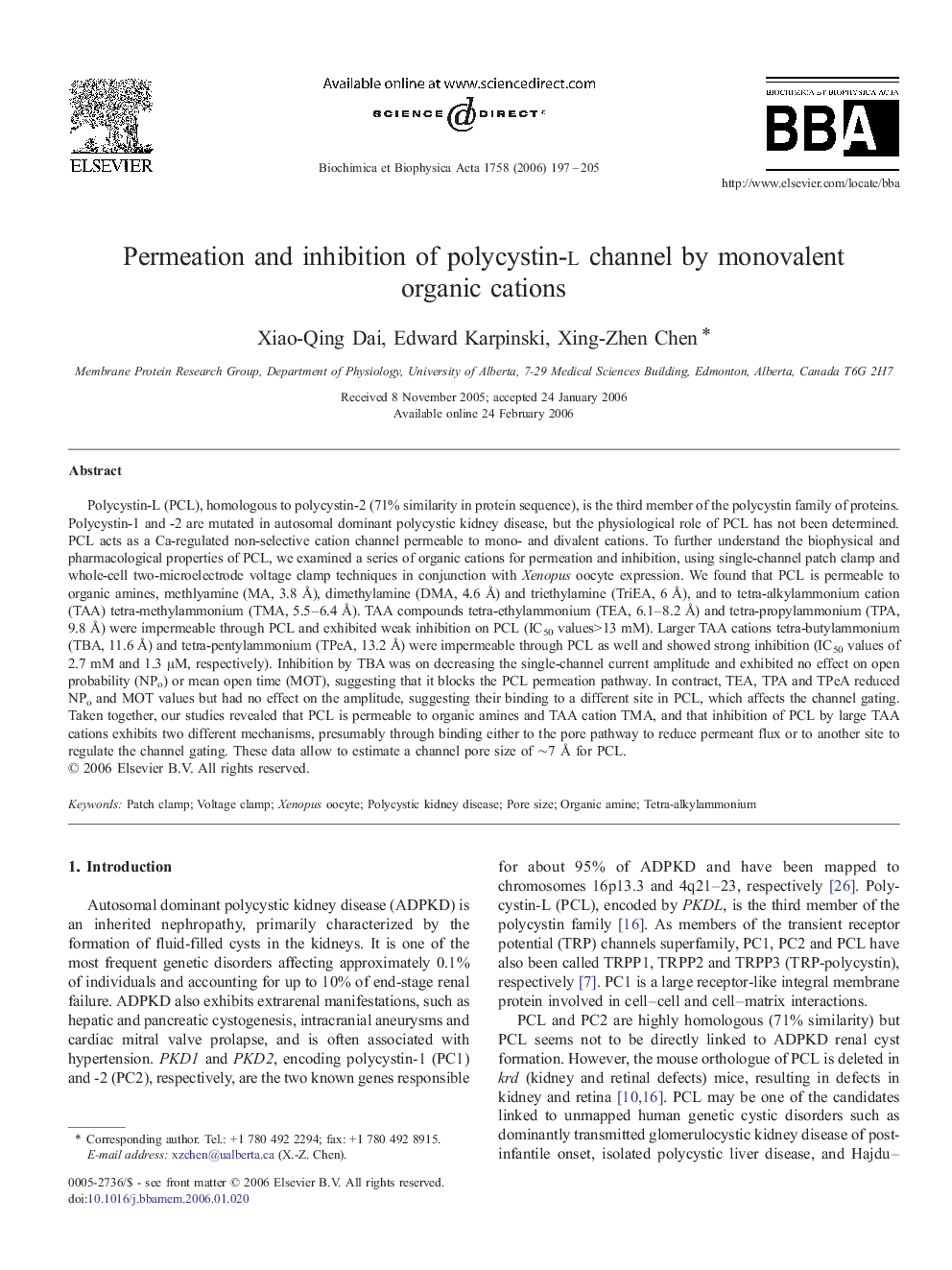| کد مقاله | کد نشریه | سال انتشار | مقاله انگلیسی | نسخه تمام متن |
|---|---|---|---|---|
| 1946182 | 1053292 | 2006 | 9 صفحه PDF | دانلود رایگان |

Polycystin-L (PCL), homologous to polycystin-2 (71% similarity in protein sequence), is the third member of the polycystin family of proteins. Polycystin-1 and -2 are mutated in autosomal dominant polycystic kidney disease, but the physiological role of PCL has not been determined. PCL acts as a Ca-regulated non-selective cation channel permeable to mono- and divalent cations. To further understand the biophysical and pharmacological properties of PCL, we examined a series of organic cations for permeation and inhibition, using single-channel patch clamp and whole-cell two-microelectrode voltage clamp techniques in conjunction with Xenopus oocyte expression. We found that PCL is permeable to organic amines, methlyamine (MA, 3.8 Å), dimethylamine (DMA, 4.6 Å) and triethylamine (TriEA, 6 Å), and to tetra-alkylammonium cation (TAA) tetra-methylammonium (TMA, 5.5–6.4 Å). TAA compounds tetra-ethylammonium (TEA, 6.1–8.2 Å) and tetra-propylammonium (TPA, 9.8 Å) were impermeable through PCL and exhibited weak inhibition on PCL (IC50 values>13 mM). Larger TAA cations tetra-butylammonium (TBA, 11.6 Å) and tetra-pentylammonium (TPeA, 13.2 Å) were impermeable through PCL as well and showed strong inhibition (IC50 values of 2.7 mM and 1.3 μM, respectively). Inhibition by TBA was on decreasing the single-channel current amplitude and exhibited no effect on open probability (NPo) or mean open time (MOT), suggesting that it blocks the PCL permeation pathway. In contract, TEA, TPA and TPeA reduced NPo and MOT values but had no effect on the amplitude, suggesting their binding to a different site in PCL, which affects the channel gating. Taken together, our studies revealed that PCL is permeable to organic amines and TAA cation TMA, and that inhibition of PCL by large TAA cations exhibits two different mechanisms, presumably through binding either to the pore pathway to reduce permeant flux or to another site to regulate the channel gating. These data allow to estimate a channel pore size of ∼7 Å for PCL.
Journal: Biochimica et Biophysica Acta (BBA) - Biomembranes - Volume 1758, Issue 2, February 2006, Pages 197–205